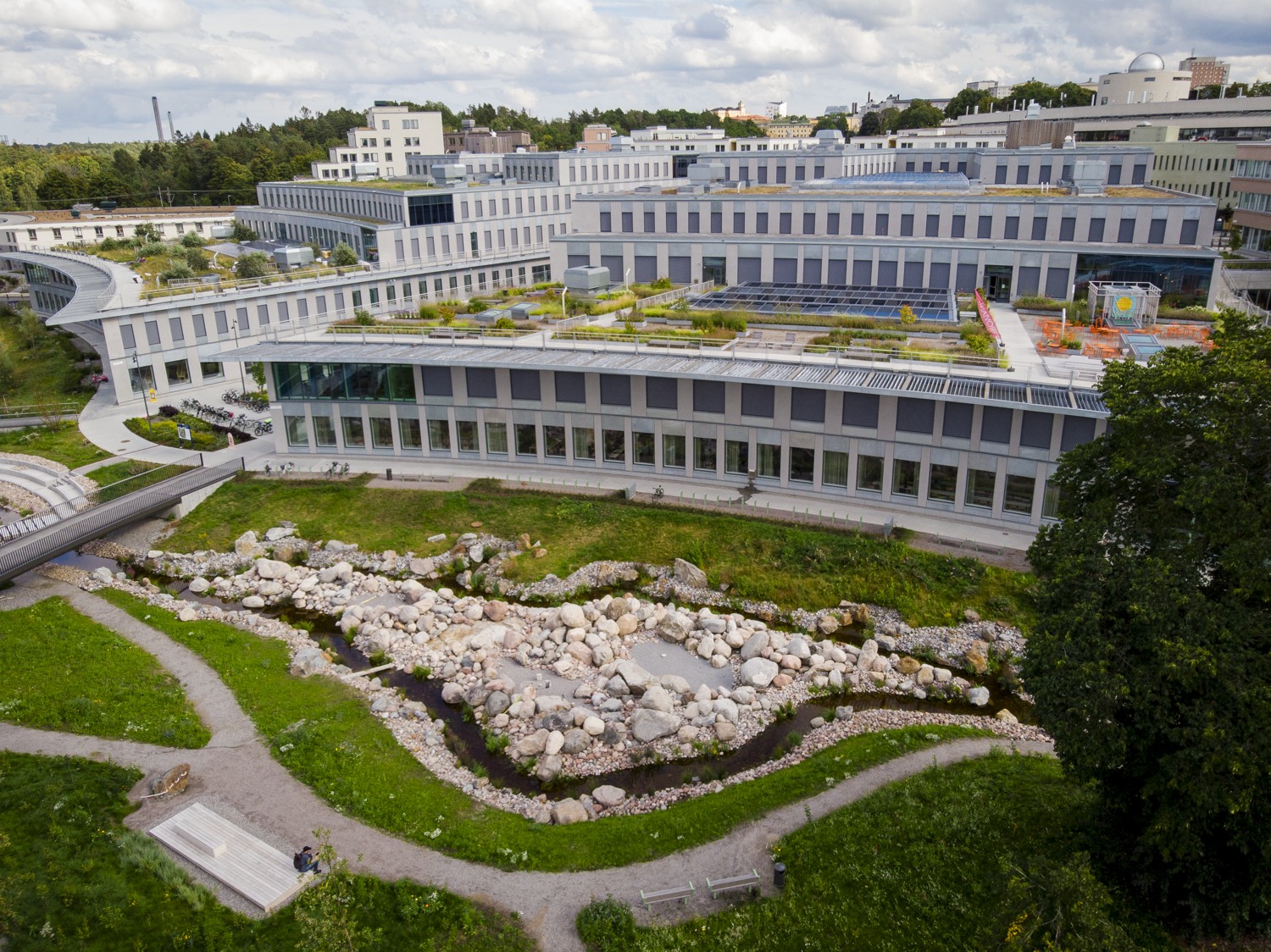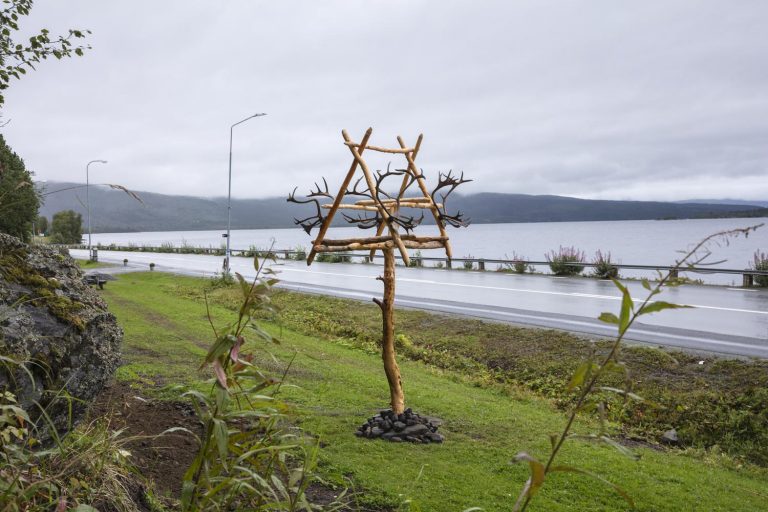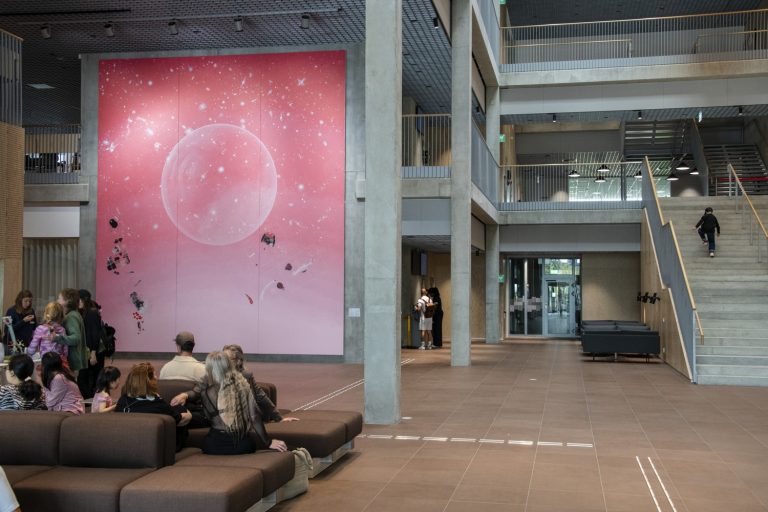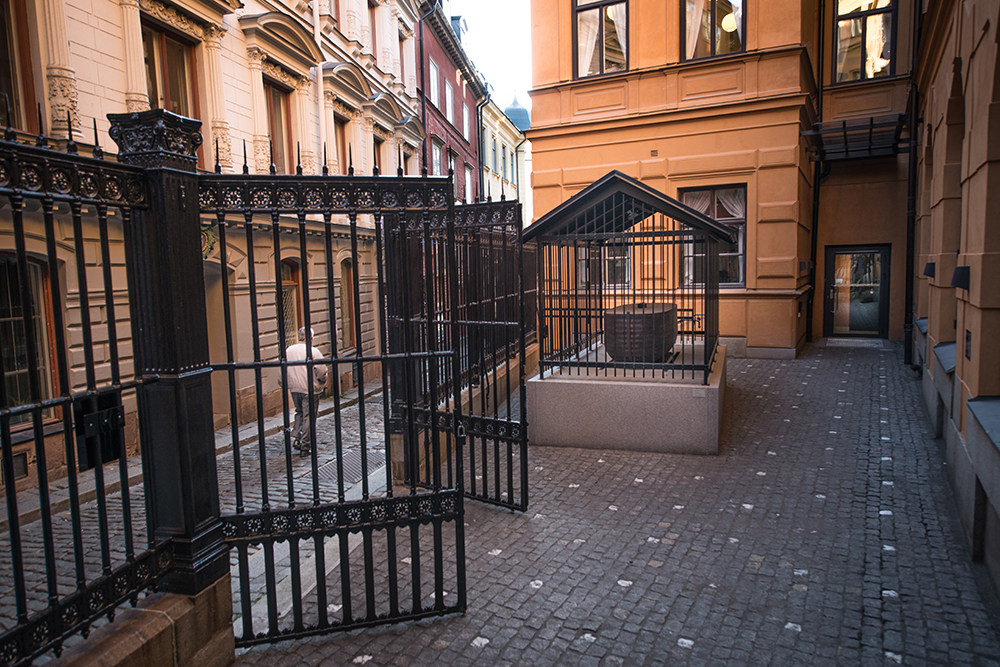In an urban runoff stream at Campus Albano at Stockholm University, OOZE (Eva Pfannes and Sylvain Hartenberg) and Marjetica Potrč have created the living artwork Future Island. It comprises an island divided into two climatic zones, one of which is five degrees Celsius warmer than the other, which over time will demonstrate the impact of climate change on nature.
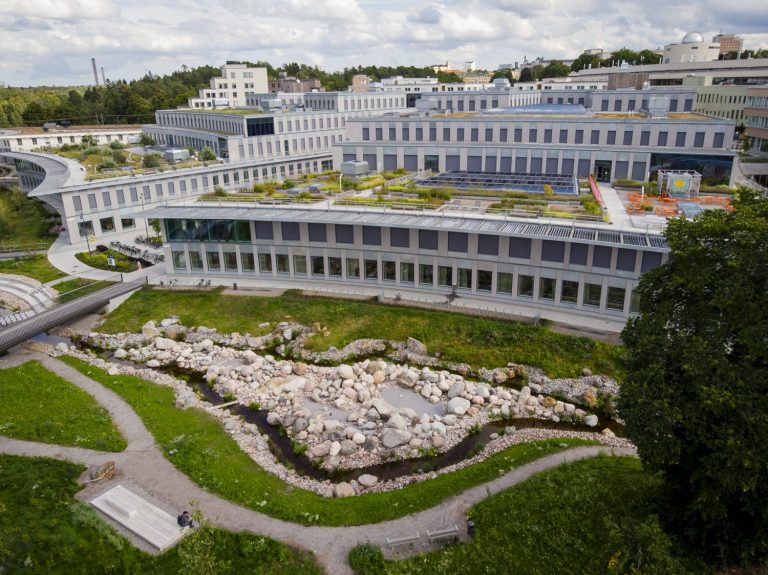
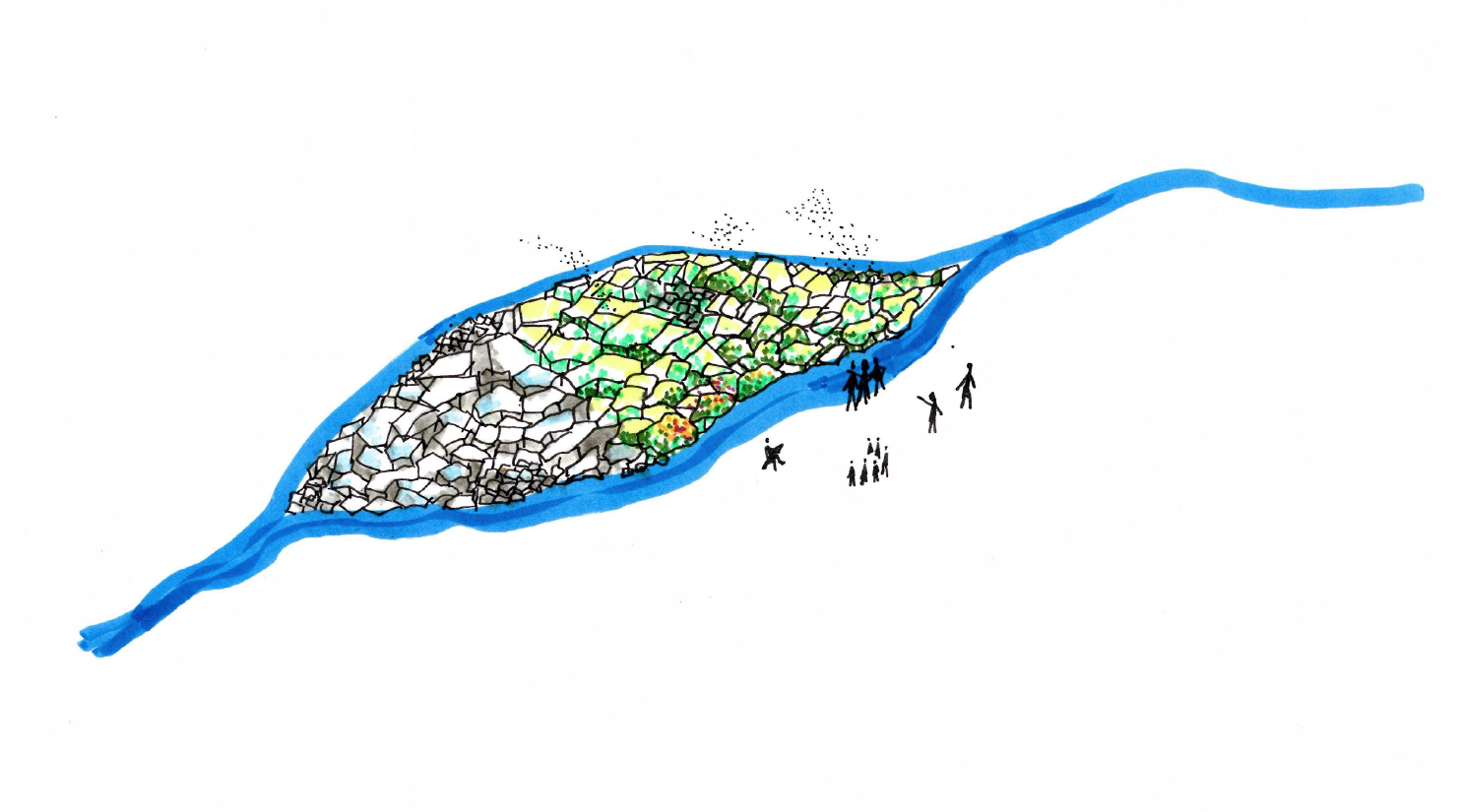
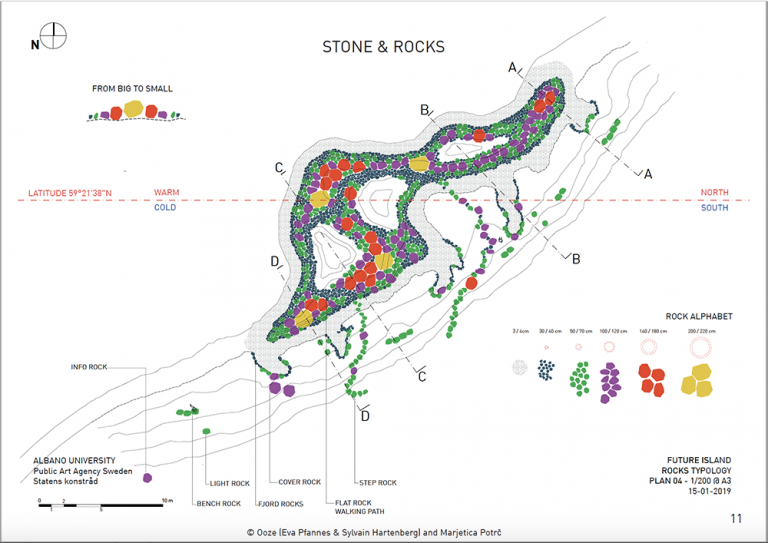
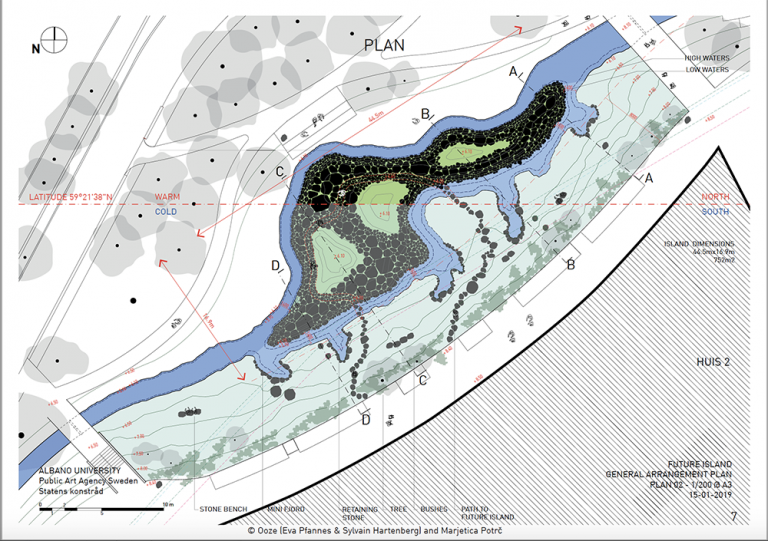
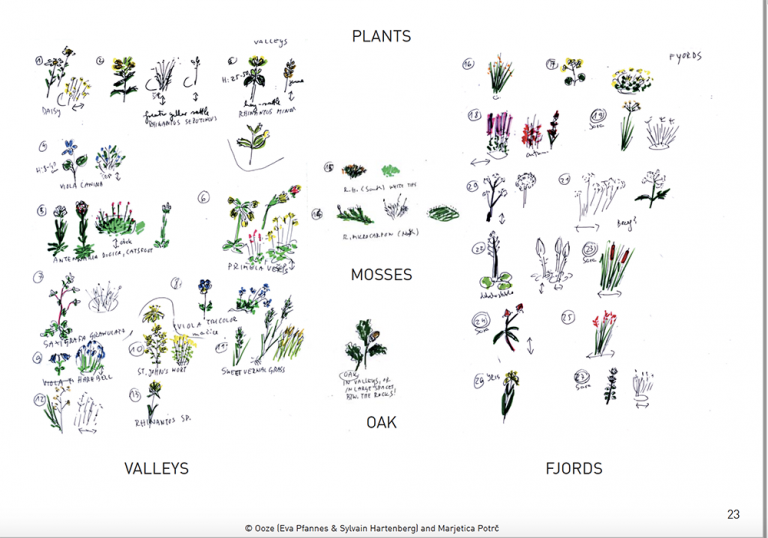
Future Island was initiated in conjunction with the development of Campus Albano and has been progressing slowly during nearly close to a decade. Appearing in a stream in the park, the 325-square-metre large island has been built of esker boulders and blasting stones. Thus, the island addresses the history of the site, where large quantities of stone and rock have been removed during the construction work. The stone symbolises and expresses that which has been and still exists under the ground in the area. Smooth, round, pointed, light and dark, large and small stones interact with one another. Some stones are rounded and come from the Fenno-Scandian ice sheet, others are blasting stones from the construction site. Future Island is a site in which history and the future cooperate – a place where 1.8-billion-year old stones face an uncertain future.
On the Construction of Future Island
The island is divided into a north and a south side, along the latitude of 59°21’20.32”N. The north zone is heated with renewable energy and will always be five degrees warmer than the unheated south zone and the surrounding landscape. Sensors will register data on climatic factors such as humidity and the temperature in the ground and in the water that surrounds the two halves of the island. The data is relayed to Vetenskapens hus (The House of Science) at Stockholm University where it is analysed and made available for educational purposes, in, for example, Vetenskapens hus’s activities for children and young people.
The island also features plants selected in collaboration with researchers from Stockholm University. The same type of plants will grow in both zones. How will they develop and adapt to the island’s different climates?
The artists describe the work as a narrative landscape:
“Future Island is a narrative landscape. Its story is climate change. With its experiment of a micro-ecosystem that simulates global warming conditions by artificially heating half of the island +5˚C it is a conversation piece observing how flora, fauna and humans adapt to warmer temperatures. As a living artwork it challenges us to redefine adaptation not as a mere reaction but as an opening up of possibilities.”
By being subjected to constant change, the artwork Future Island raises questions of the impact of climate change. With its design and content, the work touches upon the research carried out at Stockholm University.
The process of Future Island was presented at the 2022 Venice Biennale and featured, among other things, a rock equipped with the same type of heating system that has been installed on the island. The “Venice Stone” is now installed next to the island at Campus Albano.
On the Artists
OOZE was founded in 2003 by Eva Pfannes and Sylvain Hartenberg. Based in Rotterdam, the Netherlands, OOZE works in the interface of art, architecture and urbanism. Since 2008, they have collaborated with Marjetica Potrč, an artist, architect and researcher based in Berlin and Ljubljana.
Commissioned by Public Art Agency Sweden, Akademiska Hus and Svenska Bostäder. Owned by Akademiska Hus and Svenska Bostäder.
